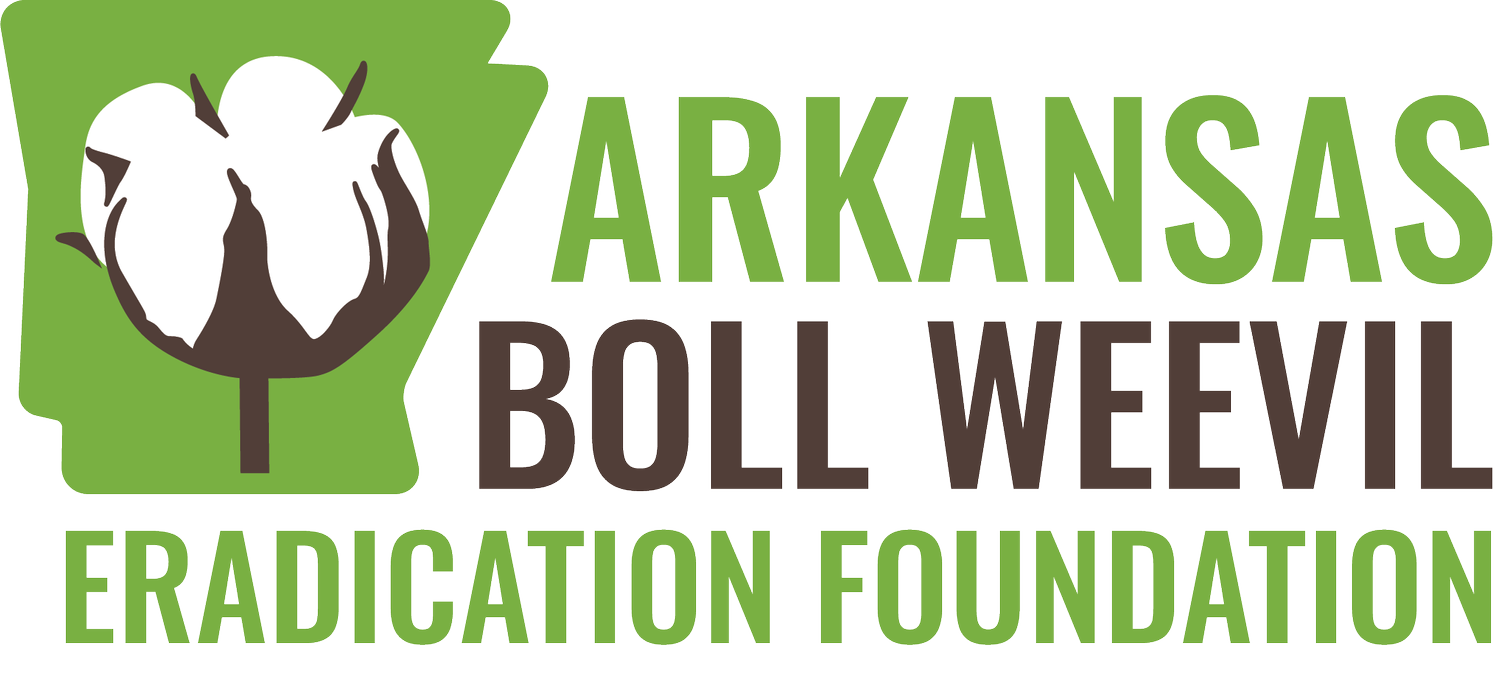
Our Legacy
Remembering what was… Preventing what could be…
Arkansas’s effort is part of a nationwide move to eliminate the No. 1 agricultural pest in the country. In a devastating raid from Mexico, boll weevils swept across southern states from 1892 to 1922. In parts of Arkansas, the pest’s arrival meant giving up cotton for other crops or quitting farming entirely. With the weevil’s eradication, these “lost” areas are now able to produce cotton once again.
The Arkansas Boll Weevil Eradication Program (ABWEP) is an Arkansas nonprofit corporation designated by the Arkansas State Plant Board (ASPB) to protect Arkansas farmers. This program’s operations are overseen and regulated by the Arkansas State Plant Board (ASPB), a division of the Arkansas Department of Agriculture.
It took 9 years to eradicate them. Let’s keep it that way.
ABWEF began eradication operations in Arkansas in 1997, and made annual expansions that ultimately included all cotton-producing areas. After the boll weevil was completely eradicated from Arkansas in 2008, the ABWEF began to downsize and make advance payments on the debt incurred with Farm Service Agency (FSA).
ABWEF continues a maintenance program that monitors the state for boll weevil presence, which is entirely a prevention effort.
Know the history behind the bale.
1993
The Arkansas Boll Weevil Eradication Foundation is established.
1997
Eradication efforts begin in what is now the Southwest Zone with the fall diapause phase under the direction of the Louisiana Boll Weevil Eradication Program.
1999
Eradication efforts begin in the Southeast Zone with the fall diapause phase.
2000
The Arkansas Boll Weevil Eradication Program assumes responsibility of the Southwest Zone from Louisiana Boll Weevil Eradication Program. Eradication efforts begin in the Central Zone with the fall diapause phase.
2001
Eradication efforts begin in the Northeast Ridge Zone with the fall diapause phase.
2002
The Northeast Ridge Zone operations are extended to include Eastern Poinsett County.
2003
Eradication efforts begin in the Northeast Delta Zone with the fall diapause phase; The Delta Zone was brought in under the authority of the Arkansas State Plant Board, which eventually entered into an agreement with the Arkansas Boll Weevil Eradication Foundation to operate the eradication program in the zone; that agreement is still in place and the zone is still managed by ABWEP today.
2005
The last confirmed presence of a boll weevil is recorded in the Southwest Zone.
2006
The last confirmed presence of a boll weevil is recorded in the Central Zone; over 95% of the weevils captured were caught in fields adjacent to the Northeast Delta Zone; the area south of Interstate Highway 40 was weevil free.
2007
The last confirmed presence of a boll weevil is recorded in the Northeast Ridge Zone. The last confirmed presence of a boll weevil is recorded in the Northeast Delta Zone.
2008
The last confirmed presence of a boll weevil is recorded in the Southeast Zone near Montrose where 99% of the weevils were caught.
2010
Five boll weevils are caught in three traps in the Central Zone, but an investigation concludes that the weevils were placed in the traps by a third party; response protocols are initiated though no additional weevils are caught alleviating the need for additional chemical applications.

The eradication of the boll weevil from Arkansas by Arkansan cotton farmers is one of the most monumental events in our state’s economic history.
— Mike Huckabee

